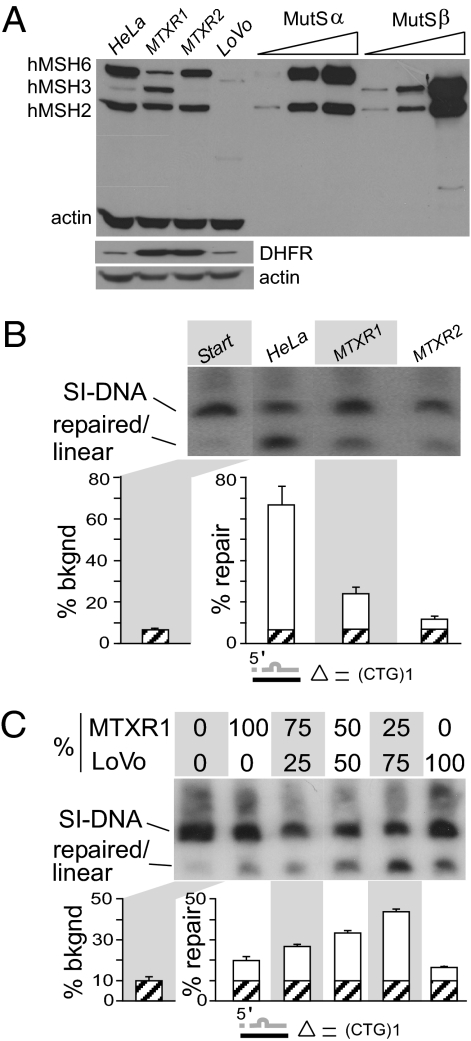Fig. 2.
Short slip-out repair is sensitive to MutSβ concentration. (A) hMSH3, hMSH6, and hMSH2 proteins in cell extracts. In lanes 1–4, 50 μg of HeLa, HeLaMTXR1, HeLaMTXR2, or LoVo cell extracts, respectively, were separated by SDS/PAGE. In lanes 5–10, 15, 120, or 240 ng of purified hMutSα or 7, 30, or 455 ng of purified hMutSβ were loaded to demonstrate the similar immune responses of the proteins and the lower detection limits of the experiment. Western blotting was simultaneous for hMSH3, hMSH6, hMSH2, and actin (SI Appendix, Fig. S3). DHFR was blotted and probed separately. (B) (Upper) Southern blot analysis of repair of a circular hybrid with a single CTG slip-out, processed by HeLa, HeLaMTXR1, and HeLaMTXR2 with the starting material shown on the left. Autorad is from a single gel, identical exposure time, with intervening lanes excised for presentation. (Lower) Repair efficiencies of corresponding reactions were calculated on three to six replicates. Graph shows starting background (hatched bars) and repair (white bars). (C) (Upper) Southern blot analysis of repair of a circular hybrid with a single CTG slip-out, processed with mixtures of hMSH3-overexpressed HeLaMTXR1, and MMR-deficient LoVo extracts to dilute hMSH3 levels. (Lower) Repair efficiencies were calculated on three to six replicates. Graph shows starting background (hatched bars) and repair (white bars).

